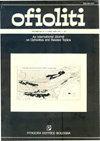odp leg 119, site 745的新近系放射虫生物地层
IF 1.3
4区 地球科学
Q2 GEOLOGY
引用次数: 0
摘要
对ODP Leg 119, Site 745的新近系层序进行了大量的、保存完好的放射虫类地层分析。对上新世-更新世序列的放射虫组合进行了详细的生物地层分析。共鉴定出77个放射虫类群,包括3个重加工类群。该岩心长99.55 m,描述和说明了21个具有重要地层意义的物种,并确定了四个放射虫带,即Phi, Chi, Psi和Omega(从最老到最年轻)和上新世-更新世边界。然后将这些与早期在南大洋建立的带和边界相关联。本文章由计算机程序翻译,如有差异,请以英文原文为准。
NEOGENE RADIOLARIAN BIOSTRATIGRAPHY FROM ODP LEG 119, SITE 745
Abundant, generally well preserved radiolarians were used in a stratigraphic analysis of the Neogene sequence of ODP Leg 119, Site 745. Detailed biostratigraphic analysis has been undertaken of radiolarian assemblages of the Pliocene-Pleistocene sequence. Seventy-seven radiolarian taxa were identified including three reworked forms. Twenty-one stratigraphically important species are described and illustrated from this 99.55 m long core, and allow the recognition of four radiolarian zones, i.e., Phi, Chi, Psi and Omega (from oldest to youngest) and the Plio-Pleistocene boundary. These are then correlated with the earlier established zones and boundary in the Southern Ocean.
求助全文
通过发布文献求助,成功后即可免费获取论文全文。
去求助
来源期刊

Ofioliti
地学-地质学
CiteScore
2.40
自引率
7.70%
发文量
1
期刊介绍:
Since 1976, Ofioliti provides an international forum for original contributions and reviews in the field of the geodynamics, petrology, geochemistry, biostratigraphy, stratigraphy, tectonics and paleogeography applied to ophiolitic terrains and modern oceanic lithosphere, including their sedimentary cover. Studies of topics such as geodynamics of the mantle, the evolution of orogens including ophiolites and paleoceanography are also welcome
 求助内容:
求助内容: 应助结果提醒方式:
应助结果提醒方式:


